Semiconductor Image Sensors in IP Camera Systems
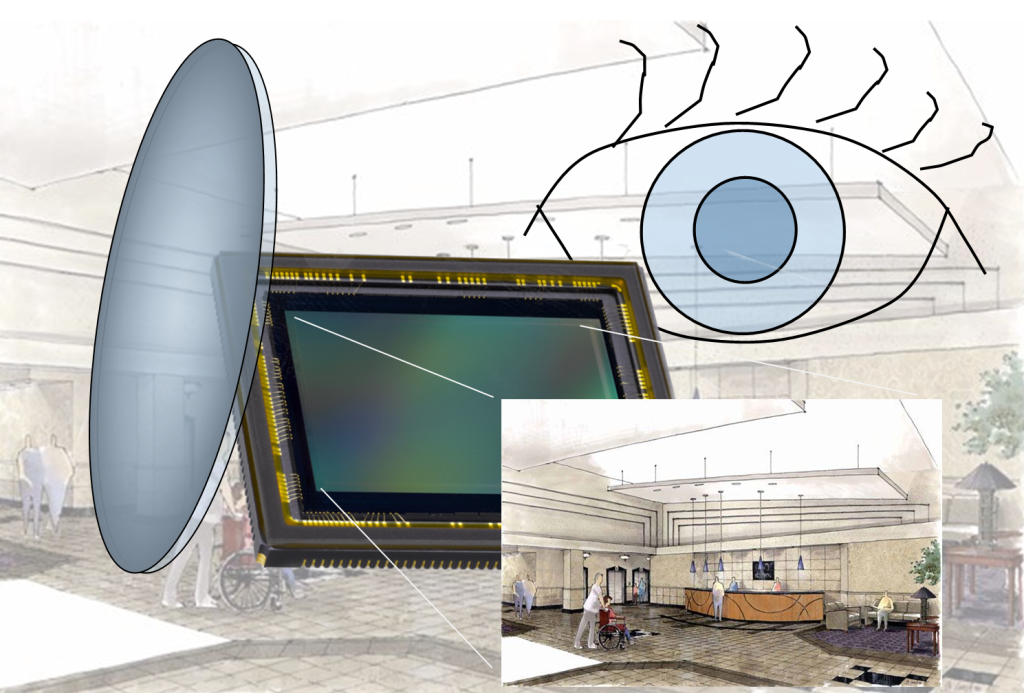
The wonder of eyes. If eyes are the windows to your soul, then IP cameras with their lens and CMOS sensors are the window to computer vision. Like our eyes, the sensors in cameras convert light to electrical signals that the computer can use.
This article describes how the CMOS sensor in IP camera systems converts the visual world into digital signals.
History of the Video Sensors in IP Cameras
Before the solid-state sensors, there were vacuum tubes. The early analog video cameras used an electronic phototube device called a Vidicon or Plumbicon as the image sensor.
These tubes were based on a light-sensitive cathode ray tube.
The cathode gun of the tube emits electrons that are focused by vertical and horizontal plates. This electron beam scanned the photoconductive layer of the tube. The image is presented to the screen surface of the Vidicon by the lens, and an electronic amplifier detected the resulting current changes on the screen surface.
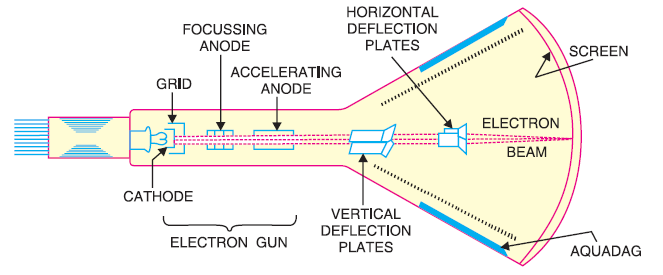
The first video systems scanned the surface one line at a time and created a picture that had 525 TV lines (NTSC in the US). The scanning process was either interlaced or progressive. The interlaced scan made two passes over the surface, with each pass including half the number of lines. Both of the fields were interlaced to create one frame. The progressive mode scanned all the lines in one pass.
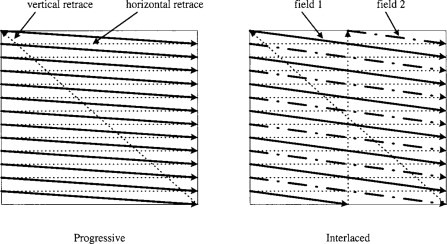
In those days, we measured resolution by the number of lines that could be discerned on a test chart.
For more about resolution, take a look at Understanding IP Camera Resolution Specifications.
How the Sensors in IP Cameras Work
An IP camera is a digital camera that connects to the network. It consists of an optical sensor, lens, video processing circuits, and a network interface. The sensor is an essential part of the camera. The camera is part of an IP camera system that consists of a video recording system, video management software, network switches, and computer display systems.
The latest CMOS solid-state sensors provide a much higher resolution than the older analog sensors. The resolution is measured by the number of pixels in the sensor rather than the number of TV lines. There are solid-state sensors with over 20 megapixels.
Photo-Diode
The critical component of the camera sensor is a photodiode that converts light to an electrical signal. A diode is a device that limits current flow, primarily in one direction.
The photodiode is a special class of diode that has a window for outside light.
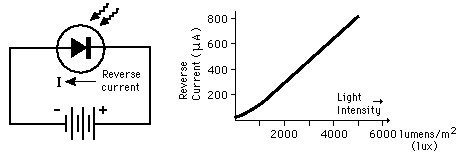
The light level affects the back-flow of current that is amplified and converted to a digital signal by an analog-to-digital (AD) converter. Many photodiodes are used in light-sensing image semiconductors.
CMOS Switch Circuit
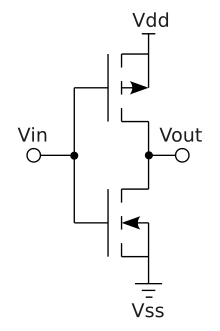
The Complementary Metal–Oxide–Semiconductor (CMOS) uses complementary and symmetrical pairs of p-type and n-type MOSFETs for logic functions.
CMOS technology is used in microprocessors, memory chips, and other digital logic circuits. CMOS technology is also used for analog circuits such as image sensors (CMOS sensors).
One of the key benefits of this technology is that it uses less power than technologies that exclusively use either p-channel or n-channel (nMOS) circuits.
The CMOS switching type circuit is an essential part of the semiconductor sensor. The CMOS sensor uses many of these circuits.
Semi-Conductor Sensor Converts the Light to Digital Image
There are two types of semiconductor sensors, the charge-coupled device (CCD) and the complementary metal-oxide-semiconductor (CMOS). The CCD sensor was one of the first solid-state chips used in many cameras. Still, later the complementary metal-oxide-semiconductor (CMOS) became more popular because it used less power than the CCD.
The complementary metal-oxide-semiconductor (CMOS) was invented in 1963 by Frank Wanlass. However, it did not become widely used for imaging applications until the 1990s. Developing CMOS designs with smaller pixel sizes, reduced noise, and better image processing algorithms took time.
In a CMOS sensor, the charge from the photosensitive pixel is converted to a voltage at each pixel site. The signal is multiplexed by row and column to multiple on-chip digital-to-analog converters (DACs).
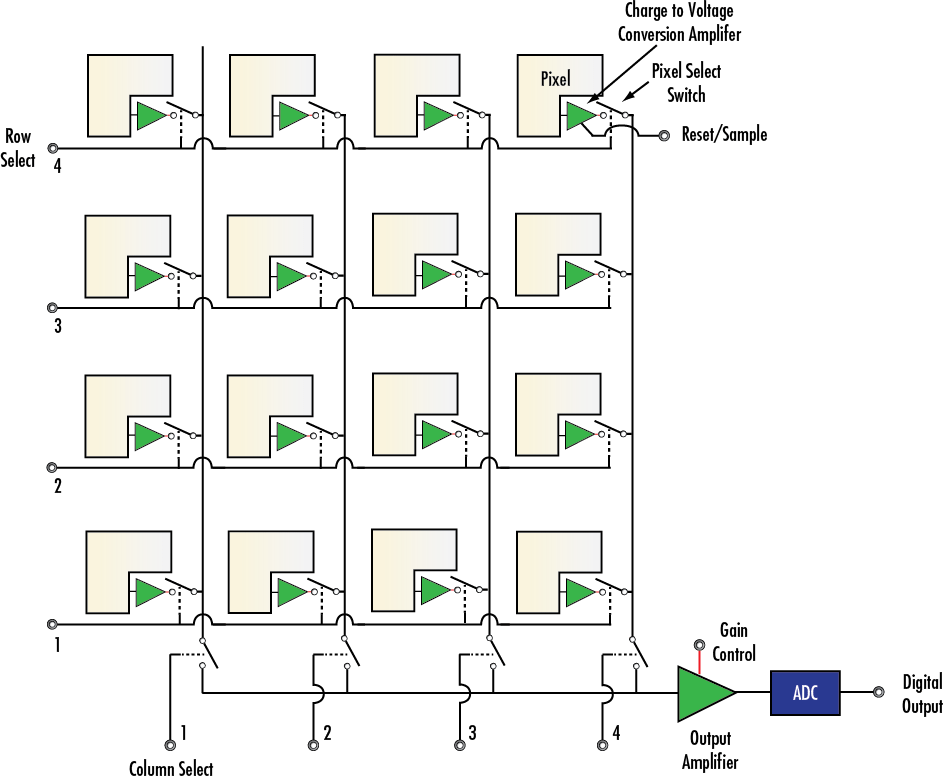
The CMOS is a digital device. Each site is essentially a photodiode and three transistors, performing the functions of resetting or activating the pixel, amplification and charge conversion, and selection or multiplexing.
Creating the Color Image
The digital camera uses filters to separate the light spectrum and create the colored video. Green, red, and blue filters are used to define all the colors. There are two ways to filter the light; one way is to use three filters and three sensors, the other way is to use one sensor and three small filters for each photodiode.

IP cameras use three tiny filters for each pixel location. Three photodiodes are required to define one effective pixel. There are sensors with over 20 Megapixels that provide 4K resolution.
Image Signal Processing
The image processing starts in the amplifier in the CMOS sensor. The latest CMOS devices have improved their noise and low light capability. Still, they rely on the image signal processor (ISP) and network interface to provide the best digital video to the network.
The image signal processor (ISP), sometimes called the digital signal processor (DSP), provides several functions that enhance, compress, and process the video to be displayed on a computer monitor. The larger camera companies such as Axis and Hanwha have designed and manufactured proprietary Image Signal Processors, and each claims better performance and functionality.
The image signal processor provides noise reduction, low light enhancement, a wide dynamic range (WDR), video compression (H.265), digital image stability, defog functions, and other intelligent analytics. The increase in computer capability of the ISP chip has led to intelligent analytics that includes higher-level functions. The processor provides motion detection, image identification, object removed, object left behind, and other sophisticated analysis that creates alarm conditions in an IP camera system. See our article IP Camera Systems Are Getting Smarter to learn more about intelligent IP cameras.
Summary of Image Sensors in IP Cameras
Camera sensors have evolved from vacuum tubes to semiconductors, providing higher resolution and better picture clarity. The image sensor in an IP camera contains thousands of photodiodes that use light filters to define all the colors for the video image. The image signal processor processes the output of the sensor.
To learn more about the sensors used in IP camera systems, please get in touch with us at 800-431-1658 in the USA or 914-944-3425 everywhere else, or use our contact form.